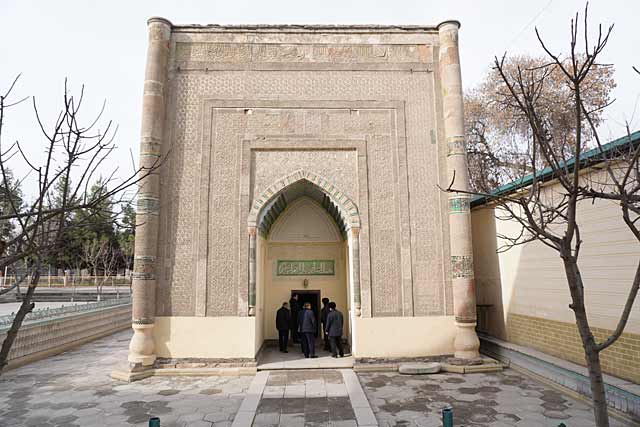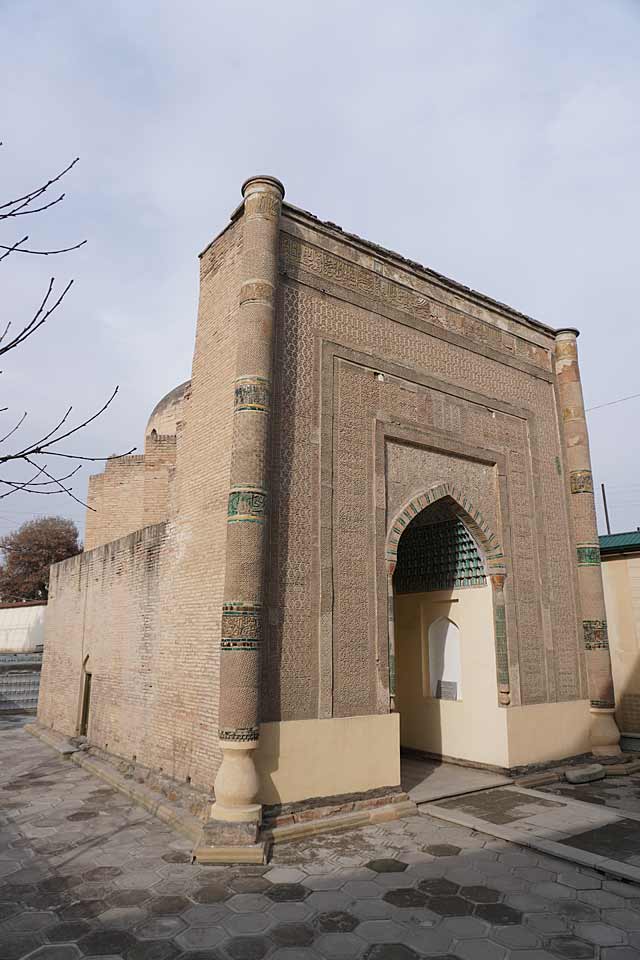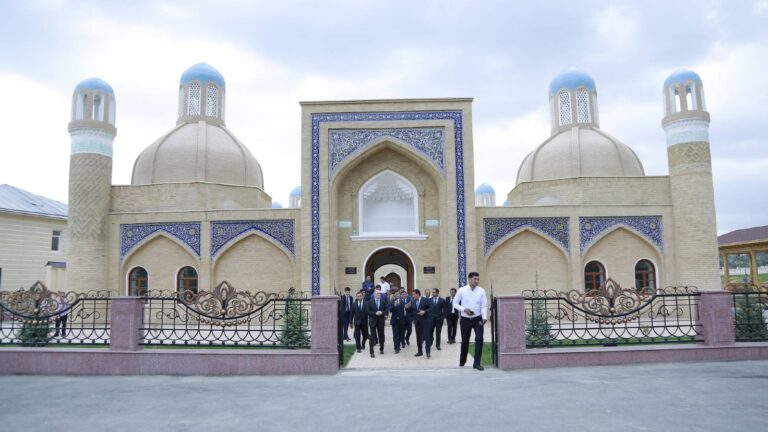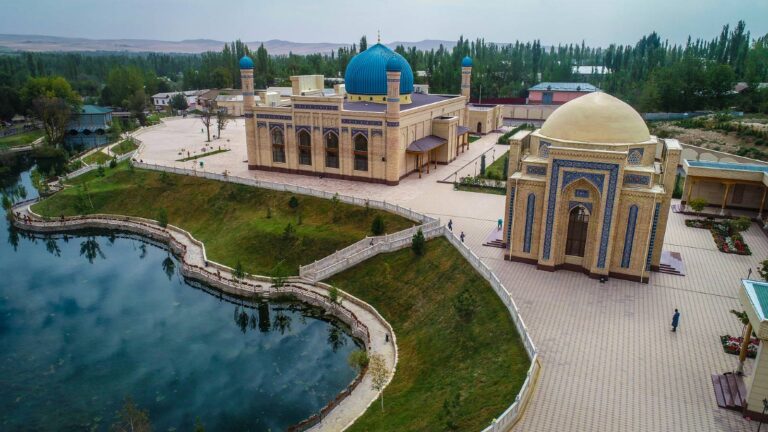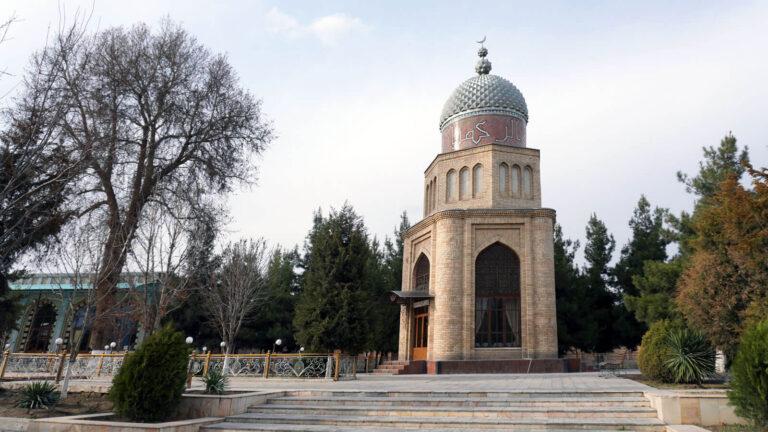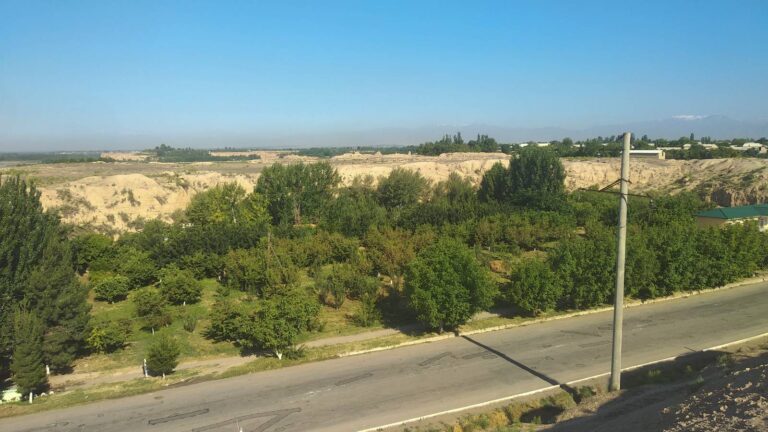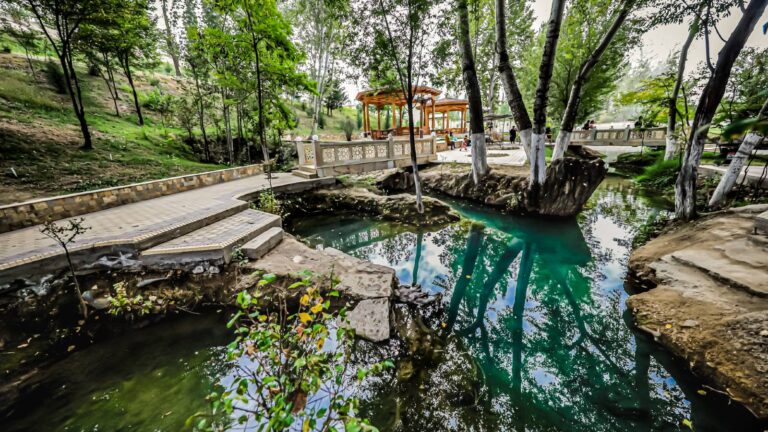Getting There
The Khoja Amin mausoleum is located in the very center of the city of Namangan, next to the busy city market, not far from the Mulla Kyrgyz madrasah. You can get to the city of Namangan through the railway “Namangan” or by plane. The distance from the airport to the Khoja Amin mausoleum is 12 km and will take about 15 minutes.
What to Expect
The facade and dome of the mausoleum were built around the second half of the XVIII century. To create it, the masters used traditional styles of Central Asian architecture. Unfortunately, only parts of the mosque and the mausoleum have survived to our days.
The fragment from the Koran (2255) is carved on the pylon of the portal. On the portal towers there are five belts of inscriptions of the formula (creed of faith), as well as the fragments from Koran in the following order (starting from the top):
- the formula of monotheism is after “Bismallah”
- the same
- Koran, 112
- the fragment from Surah al-Anbiya “The Prophets” (2187)
The main facade of the building is designed in the traditional form of a portal with a pointed arch and flanking columns at the corners. The portal arch is framed by U-shaped belts with alternating narrow and wide ribbons filled with floral and geometric ornaments. The wide belts are decorated with carved terracotta tiles, the narrow ones are made using the technique of two-layer carving on alabaster.
It is known that the bottom layer was previously painted red and served as the background for the bright white carvings. Currently, both layers appear to be the same color and hardly differ in tone from the carved terracotta tiles.
In the facing of the portal, colored glazed tiles were also used. The archivolt of the arch, drawn from alternating bright green and orange bricks, stands out clearly against the background of the intricate ornamentation of the entire façade.
In the tympanum of the arch, five-petal rosettes with large flowers stand out on a net of small geometric weaves. The arch heels rest on columns lined with green tiles. Noteworthy are the orange-red conical capitals decorated with a relief in the form of three loops.
The lower parts of the corner guldasts are glazed in orange and green tones. The facade owes its captivating freshness to these unpretentious and meager specks. In contrast to the rich decor of the main facade of the building, the side and rear walls are devoid of any decoration and retained the texture of brickwork.
History
The mausoleum was built in the second half of the 18th century, when Namangam turned into one of the largest cities in the Fergana Valley. Looking at the monument, one involuntarily imbued with respect for the eternally living art of folk masters, who, in the conditions of feudal reaction, political fragmentation and anarchy, managed to preserve high artistic traditions rooted in antiquity.
To decorate the building of the mausoleum, carved terracotta was used, ousted at the beginning of the 14th century from the arsenal of Central Asian architects with a multicolored glazed cladding. Monuments of the XIV-XV centuries in Samarkand, the XVI-XVII centuries – in Bukhara sparkle with magnificent mosaics of multi-colored tiles, but there is no carved terracotta on them. And suddenly, completely unexpectedly, in the second half of the 18th century in the Namangan mausoleum, carved terracotta, moreover, worked by skillful and confident hands, is resurrected.
The name of the master who built the monument is written in relief letters above the entrance to the mausoleum: “A work of usto Muhammad Ibrahim, son of Abduraim.” Usto – in Tajik means master.
Facilities
Tourists can take advantage of the audio guide. The audio guides are based on Nazzar apps, which can provide information about the shrine in 11 languages.
There are several public toilets and restaurants inside the temple. In addition, there is a mosque and a hotel “Chorsu” inside the shrine.
Minibuses and taxis are available for local and foreign tourists. You can also buy souvenirs and handicrafts in memory of the Sultan Uvais Karaniya.

